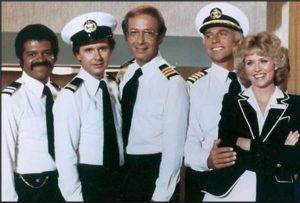 Is there a difference between Employee On-Boarding and Orientation? Barton Professional Placement Group thinks so.
Is there a difference between Employee On-Boarding and Orientation? Barton Professional Placement Group thinks so.
Like boarding a ship for a long cruise or voyage, Employee On-Boarding is a long-term journey of learning, contributing, and engagement.
Employee Orientation, is limited to those brief moments you step on the ship, are welcomed by crew, find your stateroom, and unpack – it is finite and short-term.
Recently, a member of an industry forum asked for colleagues for advice. Her question was: “What technology do you use for Employee On-Boarding?”
This question on the HR industry forum struck me as odd. I know that many software systems are selling “New Employee On-Boarding” modules to their HRIS, ATS, or other HR system. It seems to me that there is confusion.
Technology is often sought as a panacea to replace good leadership and management practices.
Separate “Employee On-Boarding” from “New Employee Orientation.” When one does that, it clarifies the objective of the two steps.
Employee Orientation is the first day or two of activities that complete the steps to officially make the new hire an employee. Filling out forms, completing the documentation for their initial employee file to be created, and so on. A quick facility tour, identifying where the restrooms are, how to escape the facility in case of a fire or other emergency procedure, and where their desk is located. Employee Orientation is very finite – and is sometimes referred to as the “compliance steps” or the steps required to ensure the firm can pay the employee.
Employee On-Boarding is generally understood to be about ensuring the investment in the newly hired employee has a positive outcome. Understanding that definition, On-Boarding is a multi-month process that good management institutionalizes to enable employees to be successful in the role they were hired to perform. One good example of this is the “30-60-90 day plan and associated review milestones” that many companies put in place. Another good example is a firm’s long-term training program to use their CRM, ATS, HRIS, ERP and other systems.
A firm goes through great effort to hire the right employee. So it stands to reason that effort would continue as a collaboration between HR and management to keep that “right employee” engaged and successfully contributing for the long-term.
Perhaps it is helpful to ponder as leaders on this forum consider their Employee On-Boarding and Orientation processes. And also to identify that technology companies have eroded the meaning of “On-Boarding” to some degree. Not bad, not good, just something to consider. Employee On-Boarding technology does a good job as a checklist of Employee Orientation steps. Orientation checklists do not replace good leadership and good management to ensure employee success well past the orientation steps in the first few days.
On-Boarding, as a long-term culture-building process, is key to reducing turn-over, increasing employee engagement and ensuring employee satisfaction in their role in your organization over the long-run.
Yes, some technology systems have the ability to set calendar milestone reminders – but On-Boarding as a culture-building process is a long-term critical step that great leaders and effective managers cannot expect technology to replace.
We cannot take credit for this concept to separate Employee On-Boarding from Orientation – it’s not an original idea. However, the confusion is significant. A Google search on “on-boarding” turns up dozens of “orientation checklists” and other first-day-on-the-job tools. Now that you have read this blog, dig in deeper, understand your objectives, and separate Employee On-Boarding from Orientation.
Barton Professional Placement Group is here as a trusted adviser to our clients. If you’d like to talk more about building these concepts in your organization, or other hiring needs, we’re here for you. Call us today.

